When you’re living the agency life, the game is to stay a step ahead of your clients, to always be ready to react to new ideas with clarity and provide a wealth of information.
You’ve probably noticed that many big brands are diverting budget from traditional outbound marketing tactics (TV commercials, print, cold calling) to inbound marketing efforts like creating content, search engine optimization, and social media, and you may be wondering exactly what inbound marketing is, how it works, and when and how to recommend it to your clients.
For that reason, we’ll explore the ins-and-outs of inbound marketing and discuss how to explain it to your client.
We’ll use two hypothetical clients—one in finance and one in fashion to help illustrate the various tactics and channels an inbound marketer might use and the benefits of inbound marketing in different industries.
1. How to Answer the Question: What is Inbound Marketing?
No matter what industry your new client is in, they’ll be familiar with the traditional idea of marketing and advertising.
When you think Mad Men style advertising, what you’re thinking about can be described as an outbound effort where a brand invests time and money to creatively develop print ads, TV commercials, billboards, digital media buys, etc. The company puts its message out into the world and hopes that people receive it, react positively, and return to the brand.

These outbound efforts are focused on finding customers. Instead, inbound marketing is an effort to get found by customers.
As an inbound marketer, you create content to bring potential customers in to you. The core concept of inbound marketing is that people want to see your videos, read your ebooks, share your posts, and use your tools.
The idea of “content” is so important to inbound marketing that people often call it “content marketing.” You put that awesome content your website and create an online “hub” that draws people in naturally.
The idea of a “hub” is important in the history of inbound marketing because the term was coined in 2005 by Brian Halligan, the founder of Hubspot, and the first person to codify the inbound methodology, which only really started taking off after 2010.
2. Teach Clients The Inbound Methodology
The inbound methodology contends that you only really want to draw the most qualified people to your website.
Once you’ve got them there for the first time, you’ll continue to engage them by providing them with resources that will help them solve their problems.
When they’re engaging with your content, you can take the opportunity to learn more about them through lead forms, surveys, and quizzes.
Finally, once you know something about your potential customer, you can begin to delight them by delivering to them the information they’re seeking most.
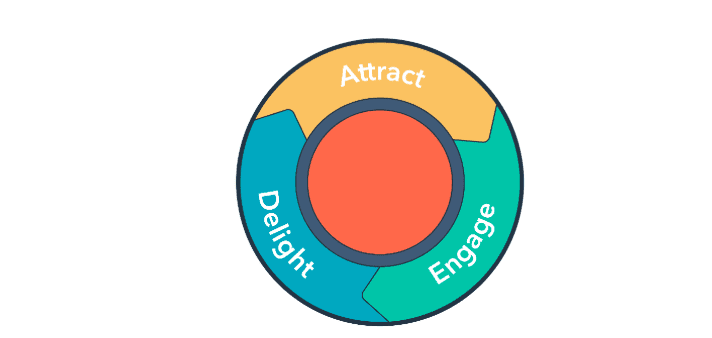
Imagine how this would play out with your finance client, a startup that helps first-time homebuyers secure better mortgage rates.
During the attract phase you would use content to bring in the right people at the right time—that is, when they’re looking for solutions like the ones your client provides.
- At this early stage, you might urge your client to think about what kind of content their ideal customer is searching for.
- What pressing questions are they searching for online? What answers will help them make their buying decisions?
- A first-time homebuyer might not even know how mortgages work, so you might help them by creating a series of blog posts or videos that answers all of their most basic home buying and borrowing questions.
Once you’ve drawn in an interested prospect to your site, you want to keep them there engaged and interacting with what you’ve got to offer.
- Perhaps you consider developing a lead generation tool, like mortgage calculator, that would help prospective home-buyers figure out the implications of different mortgage rates over various periods of time.
- In order to use this tool, which lives on your site, the user has to enter some information about themselves, not just their name and email, but maybe their income, or the price range of the home they’re looking to buy.
Because you and your client have done your research, let’s say you know that the worries and concerns for first-time home buyers looking to buy a home under $200,000 are very different than for those with a budget over $350,000.
Knowing that your client’s customer-base is segmented, you urge your client to develop two variations of the same ebook. Each one addresses the problems and concerns of home buyers in different price ranges.
That’s how you’re able to delight. Because after a user has read your client’s content and used your client’s calculator to further explore their mortgage options, they opted into your client’s email list, but instead of only receiving promotional offers, they also received an ebook tailored to their specific needs and concerns.
What relief to receive messages that matter.
3. Show Clients the Benefits of Inbound Marketing Generally, and in their Industry Specifically
There are a plethora of stats that you can have on-hand to show your clients the benefits of content marketing. A few include:
- Content marketing generates over three times as many leads as outbound marketing and costs 62% less. – Demandmetric
- Small businesses with blogs get 126% more lead growth than small businesses without.- -Impact
- After reading recommendations on a blog, 61% of U.S. online consumers made a purchase. – Content Marketing Institute
But make sure you go further than that and show your clients the specific benefits of content marketing for driving sales and brand loyalty in their industry.
Your fashion client might be interested to know that:
- In the past year, 40 percent of YouTube users turned to the platform to learn more about a product before they bought it. – Google
- 52 percent of consumers are likely to switch brands if a company doesn’t make an effort to personalize communications to them. – Salesforce
But more importantly, your fashion client would love to see how other companies in their space are using inbound marketing. You could urge them to check out ASOS, or go deep with Nasty Gal, which has a wide-ranging blog on their site that does just talk about fashion, but about lifestyle. Consider providing a presentation illustrating how other fashion brands use inbound marketing.
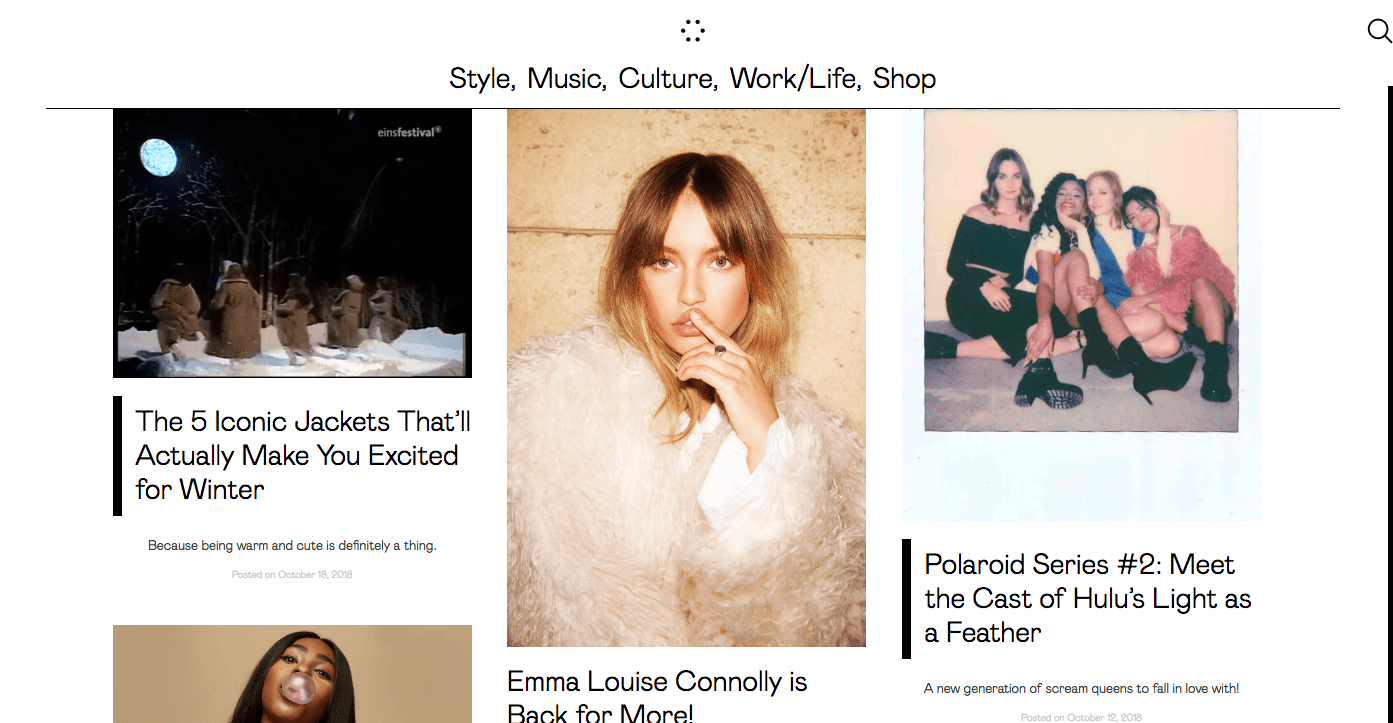
As Distilled describes NastyGal:
“They interview female role models, have a podcast and run a microsite, Girlboss.com, that showcases their podcast, physical book, newsletter and the financial aid they give to women.
This unique focus has powered a ton of incredibly on-brand content in a less competitive space and has resulted in thousands of shares and twice as many referring domains as a site like Neiman Marcus.”
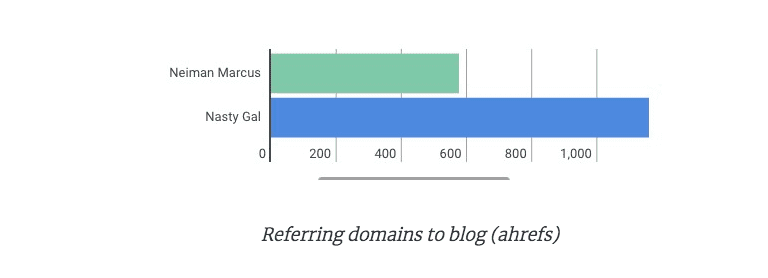
Using real examples, you can give your client a tangible idea of the various channels over which content marketing happens and show them what campaigns might really look like.
More importantly, you can give your client a realistic idea of what success really looks like and how long it takes.
Take a look at how many years of regular publishing it took for Nasty Gal to seriously drive up the number of domains referring to its site.
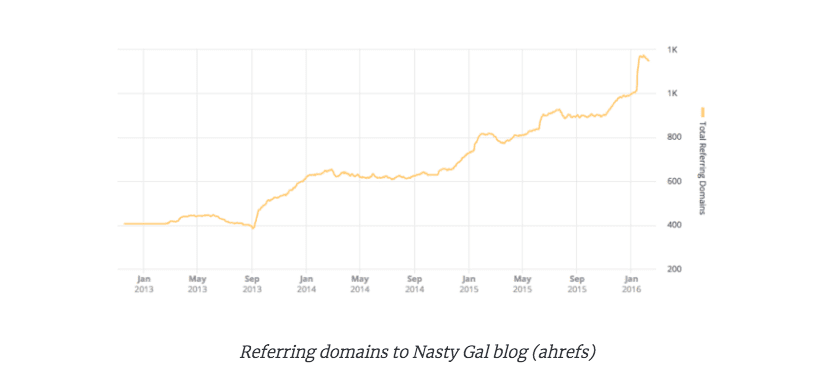
Now, you know that your finance client would never buy into content marketing based on your fashion client’s success story.
Fashion & Beauty Benchmark Report
Most finance clients would be extremely skeptical because they work in large organizations with deeply rooted company cultures, entrenched technology infrastructure, and hurdles like compliance and regulatory approval. But even in this industry, there are content marketing stars.
Take a look at Chase.com, where if you navigate to “News and Stories” you’ll find a slew of articles that are meant to help readers make the most of their money.
The range of stories is wide: from an interview with Serena Williams that discusses how she balances family, finance, and business, to an article on the costs of moving in with a new boyfriend.
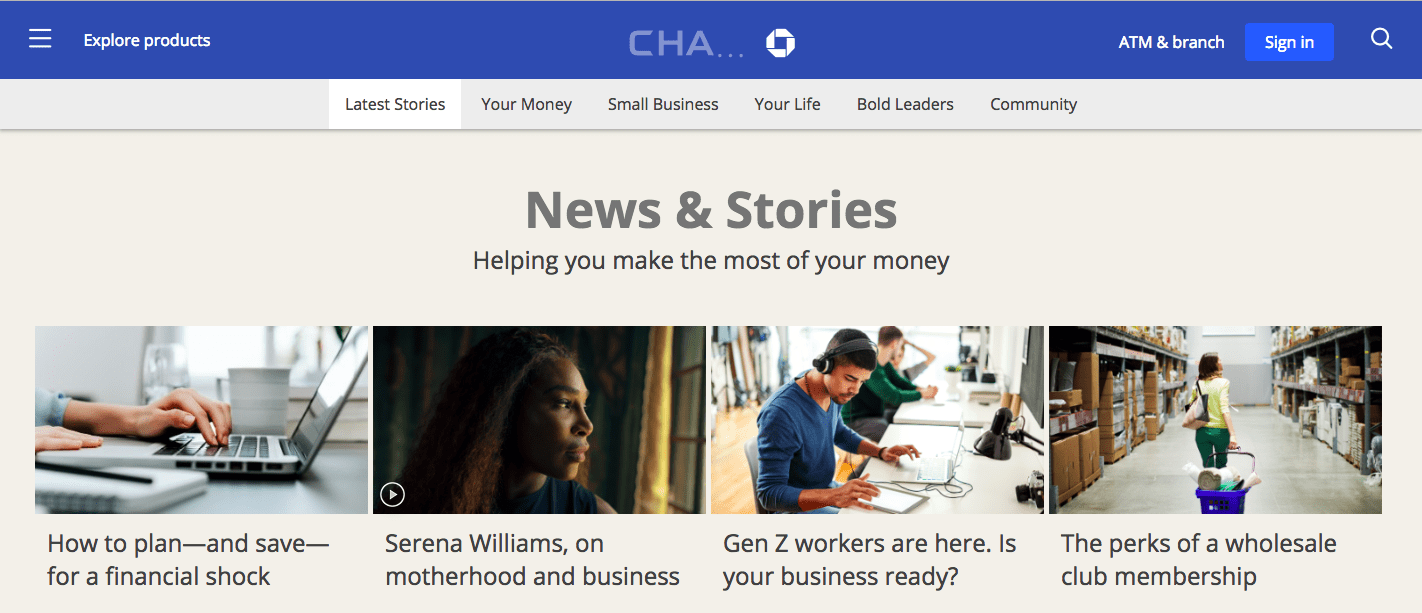
Use these examples to explain to your clients the details of how a content marketing program works. For instance, you can’t just create content, you have to distribute it. Chase probably has more resources than most of your clients, but their far-reaching distribution strategy is something to strive to.
Chase used a multi-pronged approach to get the most reach out of their content:
- They added news and stories to their homepage to reach customers and deepen existing relationships
- They managed to get distributed by Google News (very hard for brands to do) to reach new customers organically
- They formed a sponsored content partnership with the Newsletter, The Skimm, in order to reach their target group of customers: millennials
- They distributed all this good content via their social channels
As you can see it can be a lot of (fun, creative) work. Content marketing is an investment for any brand.
Don’t try to force it on clients who are reluctant to build the infrastructure to support it. Inbound marketing needs to be evangelized by executives in an organization, so that everyone contributes, the program gets funded, and it succeeds.
Be realistic with your clients and set their expectations about the cost of setting up the program and the months or years it may take to see a return accrue.